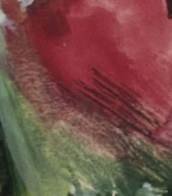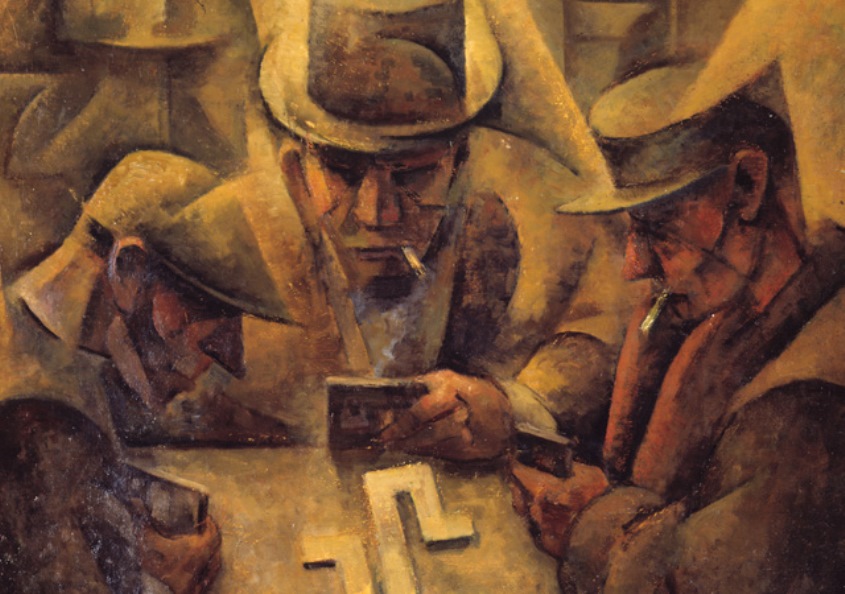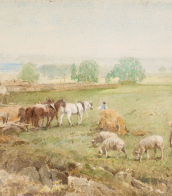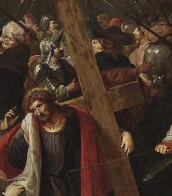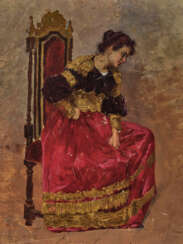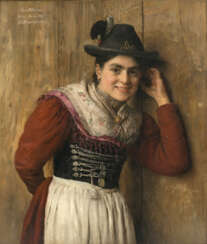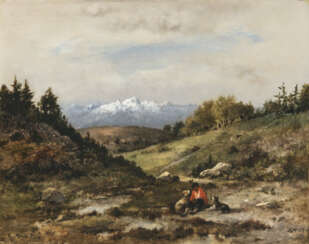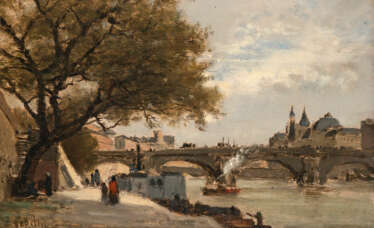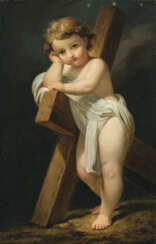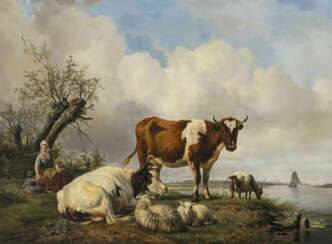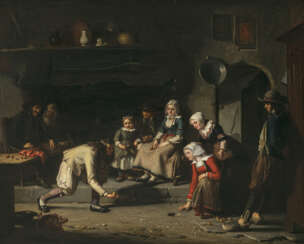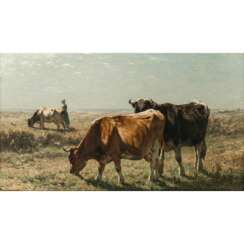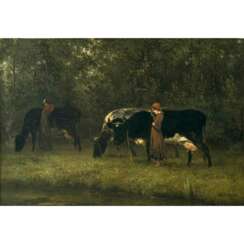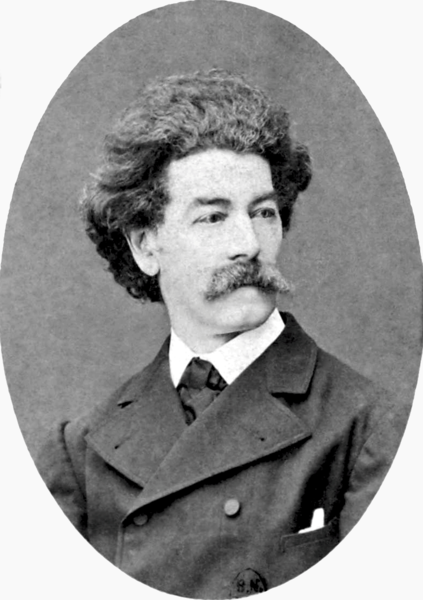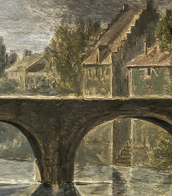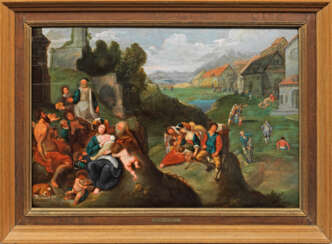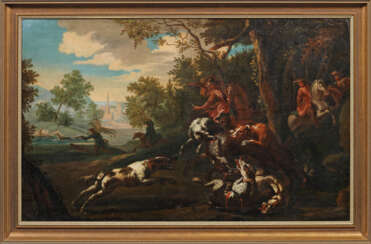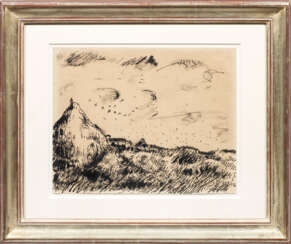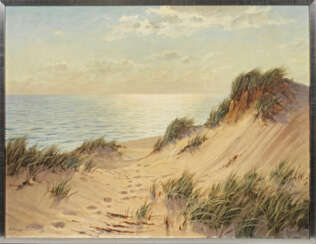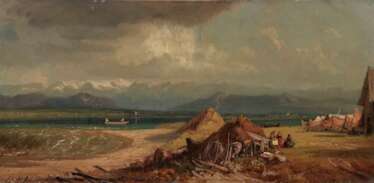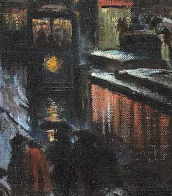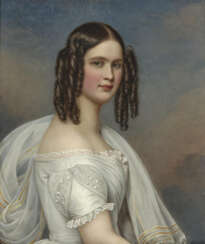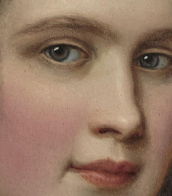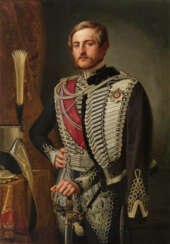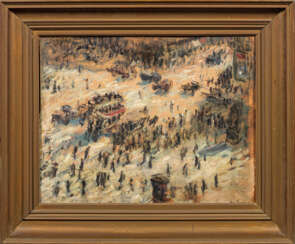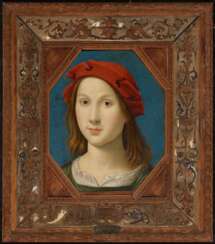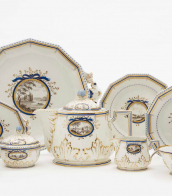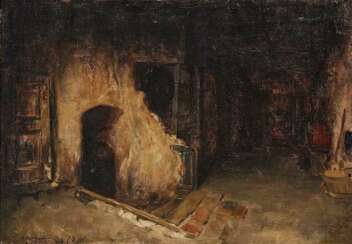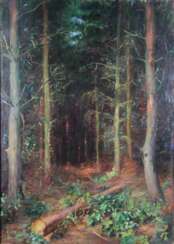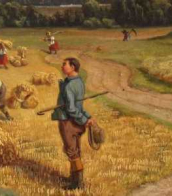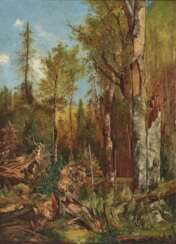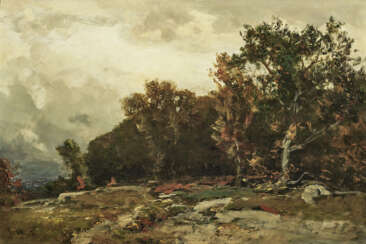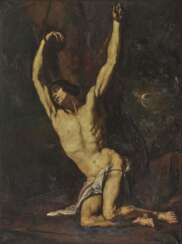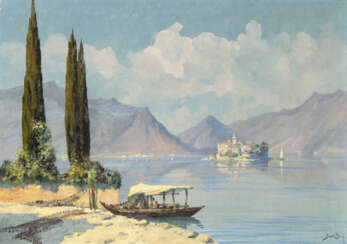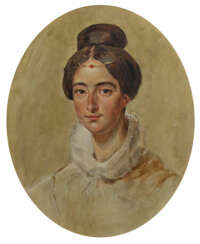gemälde des 20. jahrhunderts
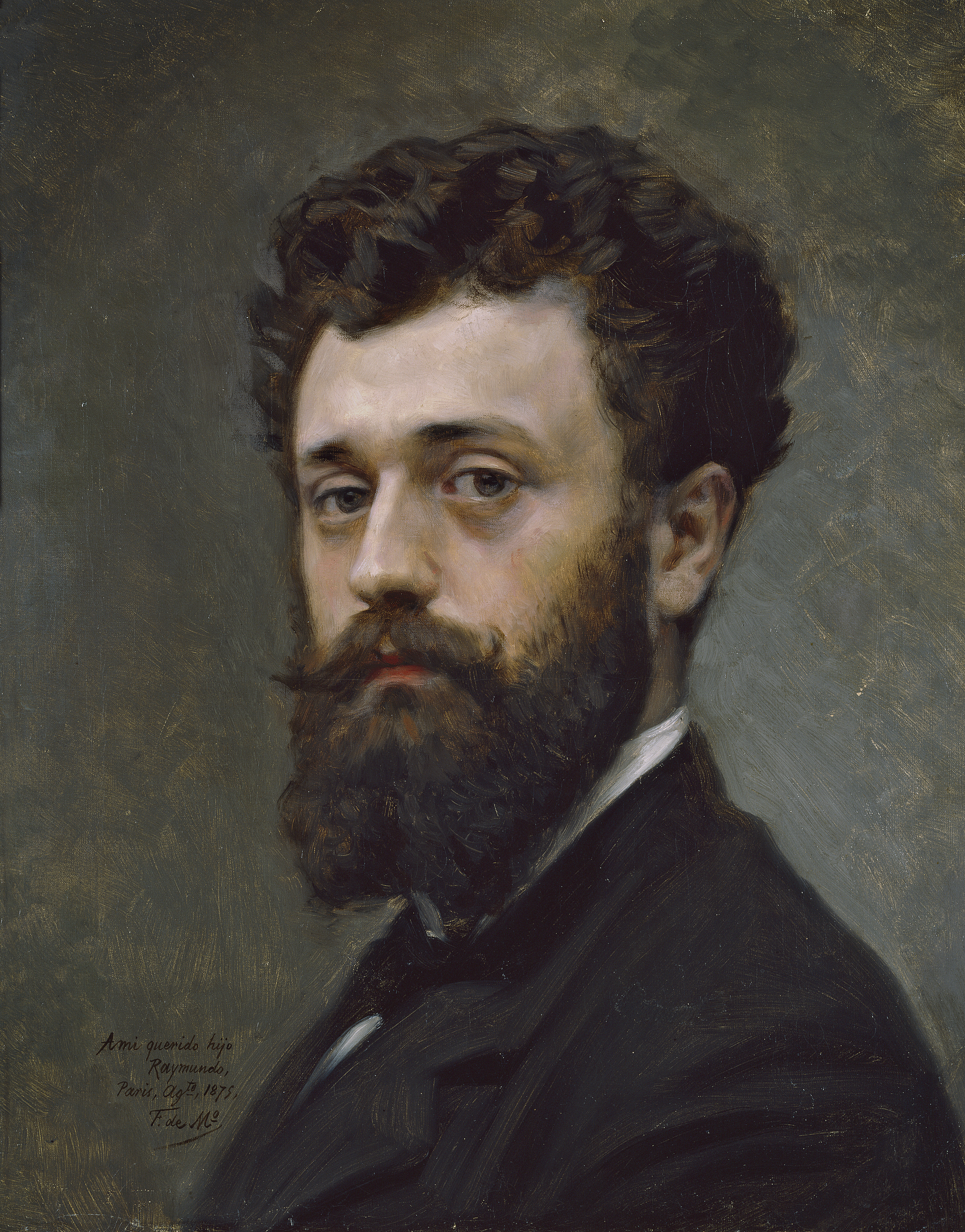
Raimundo de Madrazo y Garreta was a Spanish painter from the Madrazo family of artists who worked in the Realistic style, although his later work shows signs of Rococo and Japanese influence. He was known primarily for his genre paintings and portraits.

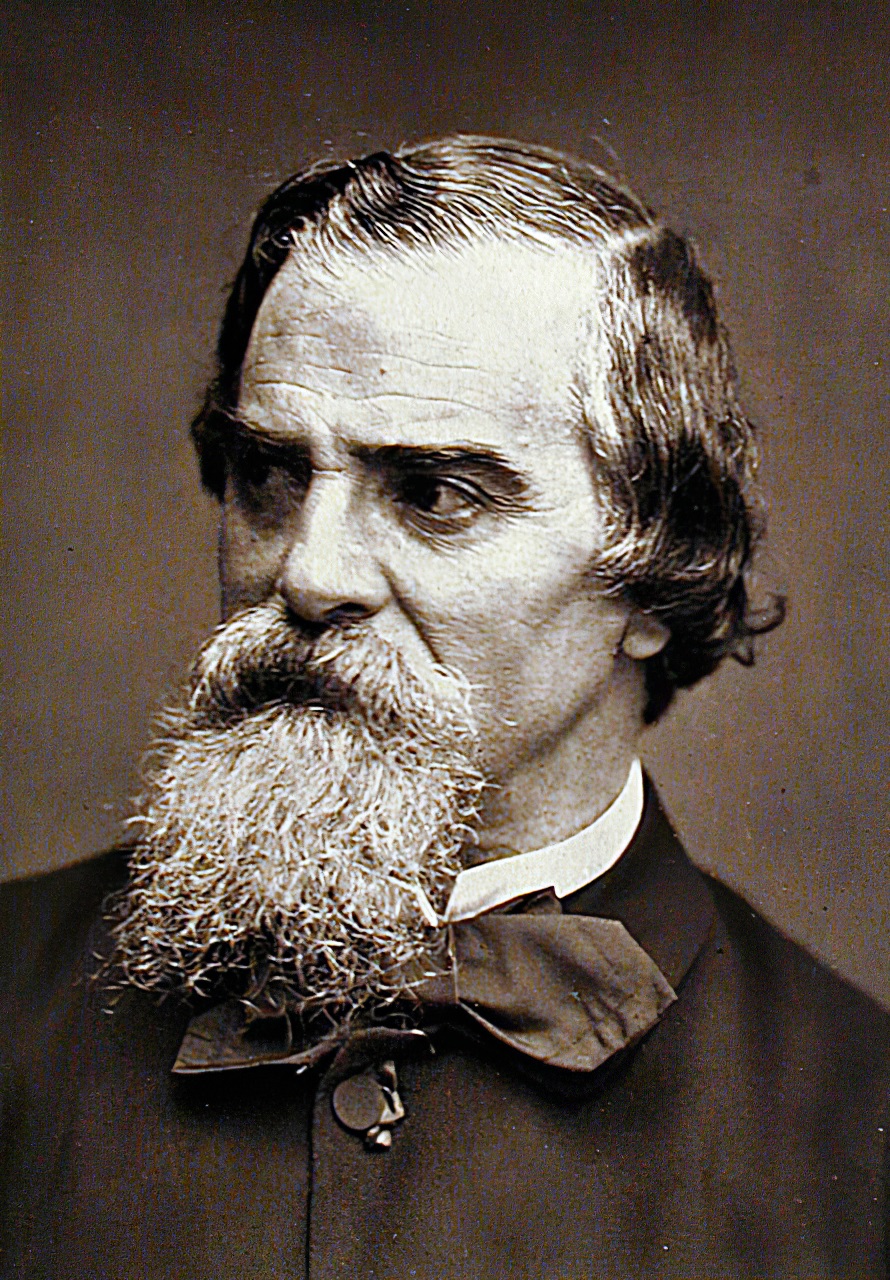
Narcisse Virgilio Díaz de la Peña was a French painter of the Barbizon school.
Díaz exhibited many pictures at the Paris Salon, and was decorated in 1851 with the rank of Chevalier (Knight) of the Légion d’honneur.
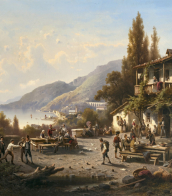

Victor Eugène de Papeleu was a painter from Belgium who also worked in France. He is known for his landscapes, images of the sea, coastal ships and beaches.
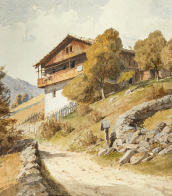
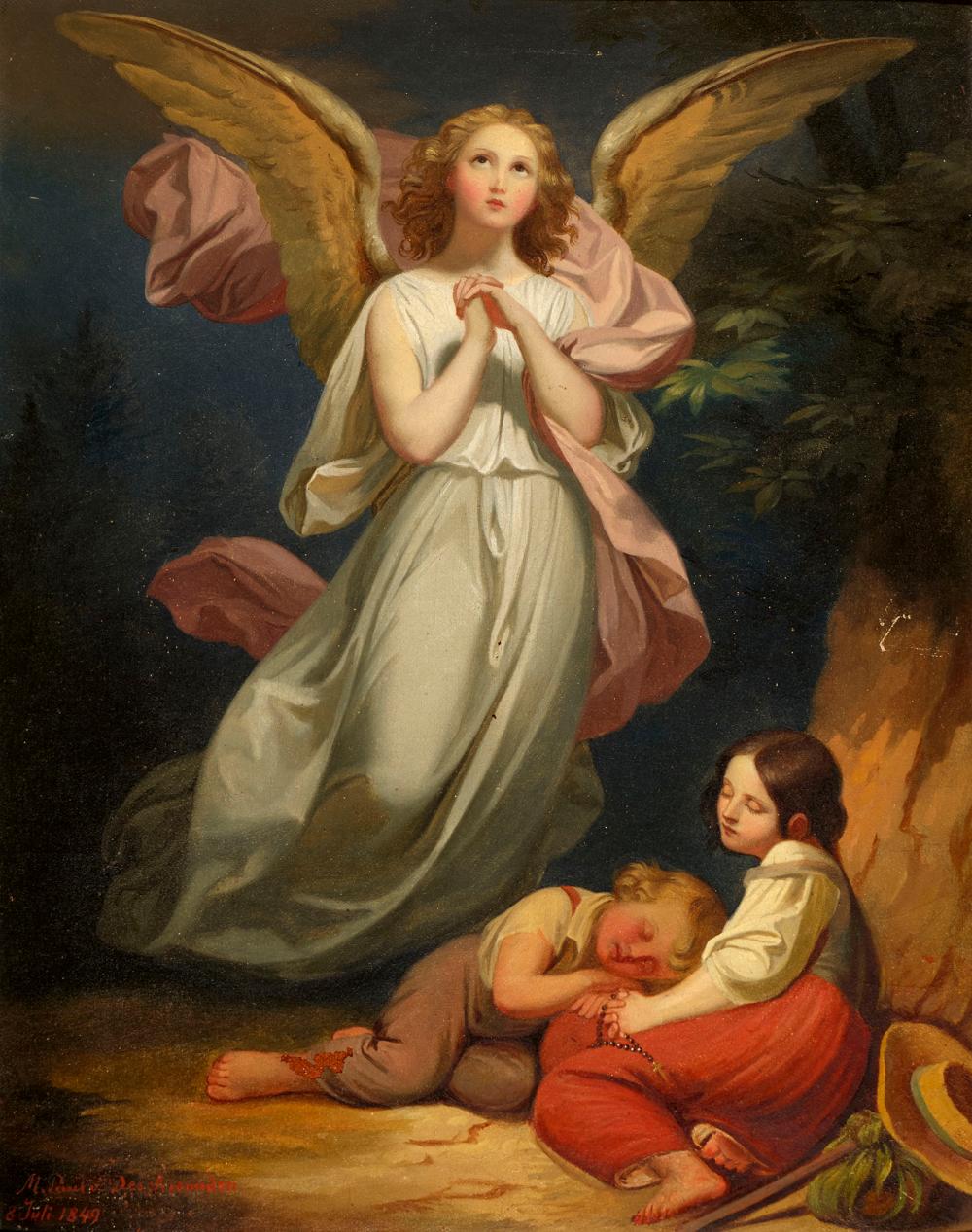
Melchior Paul von Deschwanden was a Swiss painter, representative of the Nazarene style.
He studied at the Munich Academy and then at the Academy of Fine Arts in Florence. His meeting there with the German "Nazarene" Friedrich Overbeck (1789-1869) played a decisive role in the future fate and creativity Deschwanden. He devoted much time to the study of Nazarene art, a romantic-religious artistic movement that German-speaking artists had founded in Vienna and Rome in the early 19th century.
A talented and industrious artist, Melchior Paul von Deschwanden produced some 2,000 paintings in his long life, including numerous altarpieces. These simple yet sublime paintings of religious themes as well as portraits. For some 40 years, Deschwanden remained Switzerland's leading painter.
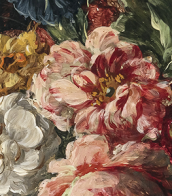
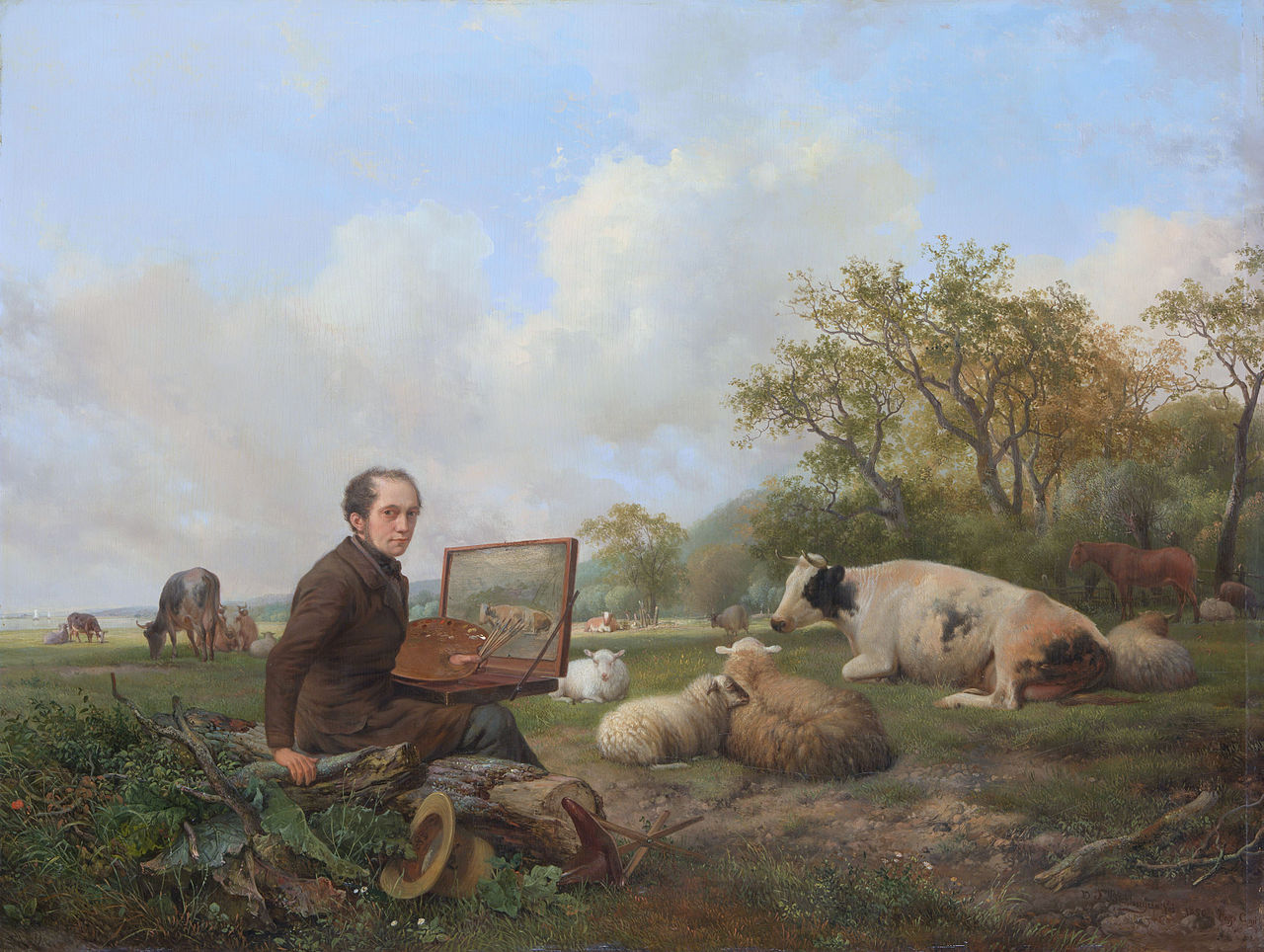
Hendrikus van de Sande Bakhuyzen was a Dutch landscape painter and teacher.
Bakhuyzen studied at The Hague Academy of Art. He is known for his romantic pastoral scenes, especially paintings of livestock, with detailed landscapes.
In 1822 he became a member of the Royal Academy of Arts in Amsterdam and a member of the board of the Academy of Arts in The Hague. He was later elected director of the Hague Academy. Hendrikus Bakhuyzen made a significant contribution to the Romantic period in Dutch art through his work and activities, raising many talented students and followers who founded the artistic movement known as the Hague School.
His children were also very talented: son Julius van de Sande Bakhuyzen (1835-1925) became a renowned landscape painter; daughter Gerardine Jacob van de Sande Bakhuyzen (1826-1895) became a still life painter; son Henrik Gerard van de Sande Bakhuyzen (1838-1923) became a prominent astronomer, member of the Royal Netherlands Academy of Arts and Sciences and director of the Leiden Observatory; son Ernest-Fredrich van de Sande Bakhuyzen was also an astronomer at the Leiden Observatory.

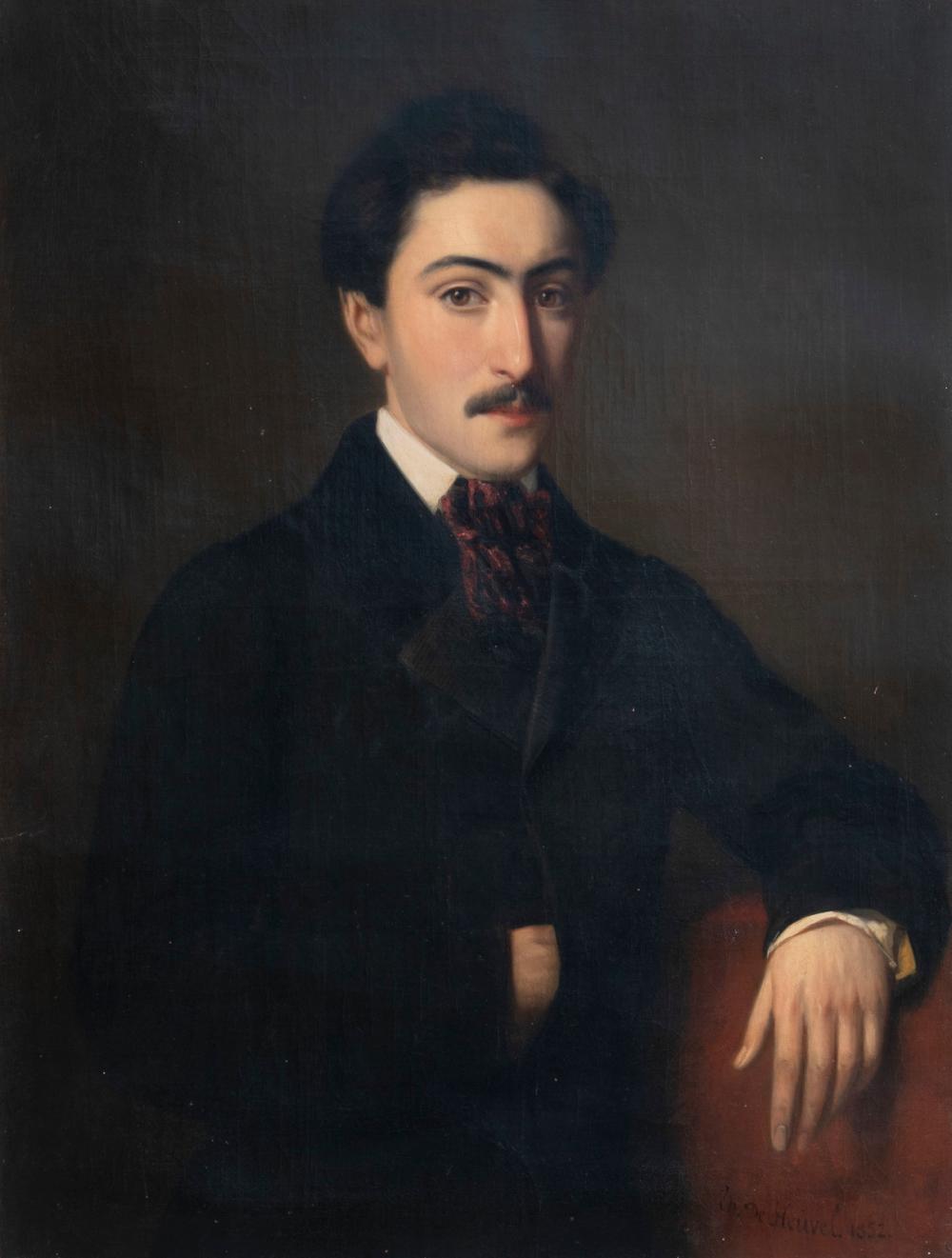
Theodore Bernard de Heuvel was a 19th-century Belgian genre painter.
De Heuvel specialized in domestic genre scenes, often involving children. For example, his paintings of a village classroom where a strict teacher is teaching a lesson to tomboys, or other cute domestic scenes are widely known.

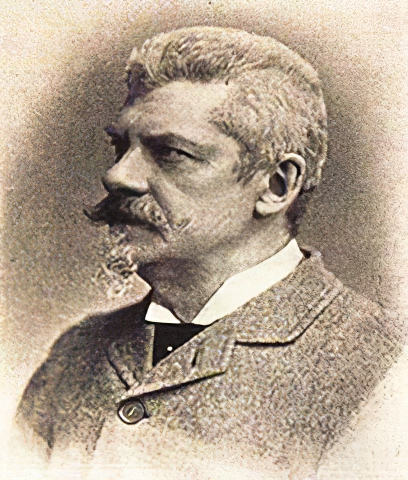
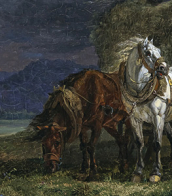
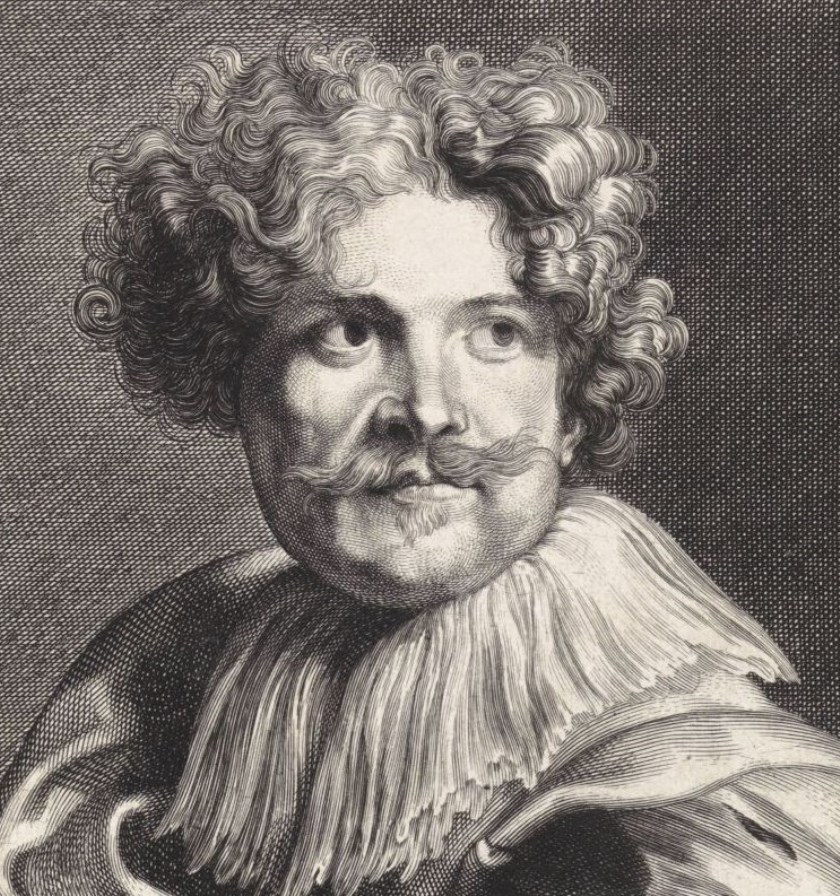
Simon de Vos was a Flemish painter, graphic artist and art collector, a member of the Guild of St. Luke in Antwerp.
Simon de Vos specialized early in his career in cabinet and genre painting in the style of the Utrecht Caravagistes. His depictions of merry company and scenes from fables are well known. From about 1640 he increasingly painted large-scale religious, allegorical and historical scenes in the style of Peter Paul Rubens and Antoni van Dyck. Among his pupils was Jan van Kessel the Elder (1626-1679).
Simon de Vos was financially successful: by the end of his life he owned four estates in Antwerp and a collection of 290 paintings.
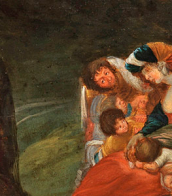
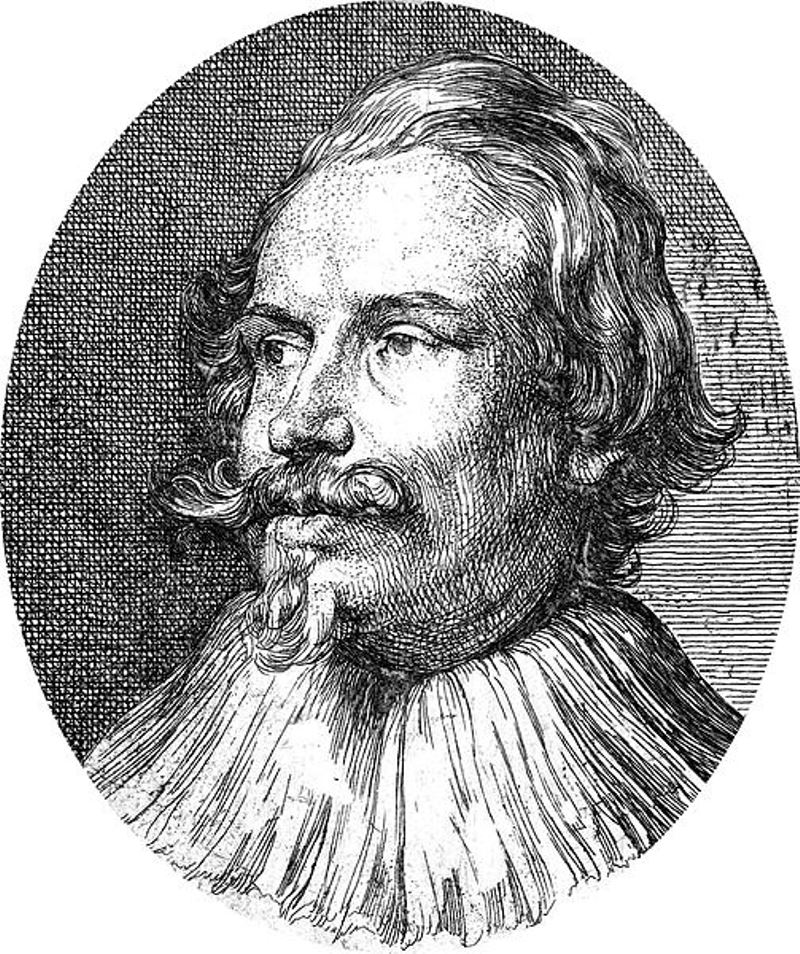
Paul de Vos was a Flemish Baroque painter and a member of the Guild of St. Luke in Antwerp.
Paul de Vos was the younger brother of Cornelis de Vos and specialized in hunting scenes with dogs, depicting various animals and birds. His skill in this genre was valued and he collaborated with Rubens in depicting animals. De Vos's paintings were highly regarded both in Spain and at other European courts.
De Vos enjoyed the patronage of Spain's influential aristocrats and received many commissions from them. In 1637-1638 he worked with Rubens and Snyders on the decoration of Spanish royal residences.

.jpg)
Maurice de Vlaminck was a French artist renowned for his vibrant use of color and contribution to the Fauvist movement. Born in Paris in 1876, Vlaminck's early work was marked by a passionate application of paint and a bold palette, drawing inspiration from Vincent van Gogh and Henri Matisse. His participation in the 1905 Salon d'Automne, alongside other Fauvist painters, was met with critical disdain, leading to the term "fauves" (wild beasts) being coined to describe their unorthodox use of intense color.
Vlaminck's career was characterized by a continuous exploration of color and form. Early on, he depicted scenes of daily life, landscapes, and portraits, imbuing them with a sense of motion through his dynamic brushwork. Notable works from this period include "Sur le zinc" (At the Bar) and "L'homme a la pipe" (Man Smoking a Pipe), which highlighted his departure from traditional portraiture and landscapes towards more expressive and mood-driven compositions. His landscapes, in particular, showcased a disregard for detail in favor of conveying atmosphere, a technique that was revolutionary at the time.
Throughout his life, Vlaminck's style evolved, showing influences from Post-Impressionism and later, a more monochromatic palette reminiscent of Paul Cézanne. Despite this evolution, he maintained a critical stance towards Cubism and its leading figure, Pablo Picasso, believing that Cubism had led French painting into a "wretched dead end". In his later years, Vlaminck's work adopted a darker palette and more naturalistic style, moving away from the Fauvist emphasis on color to explore the dramatic and expressive potential of landscapes and seascapes.
Vlaminck's impact on modern art is undeniable. His works are held in prestigious collections worldwide, including the Hermitage Museum in Saint Petersburg and the Minneapolis Institute of Art, attesting to his enduring influence and the continued fascination with his bold, expressive approach to painting.
For collectors and experts in art and antiques, Vlaminck's oeuvre represents a pivotal moment in the history of modern art, where the emotional intensity and visual impact of color were explored as never before. To stay informed on new product sales and auction events related to Maurice de Vlaminck, signing up for updates is recommended, offering exclusive insights into the vibrant world of Fauvism and modernist painting.

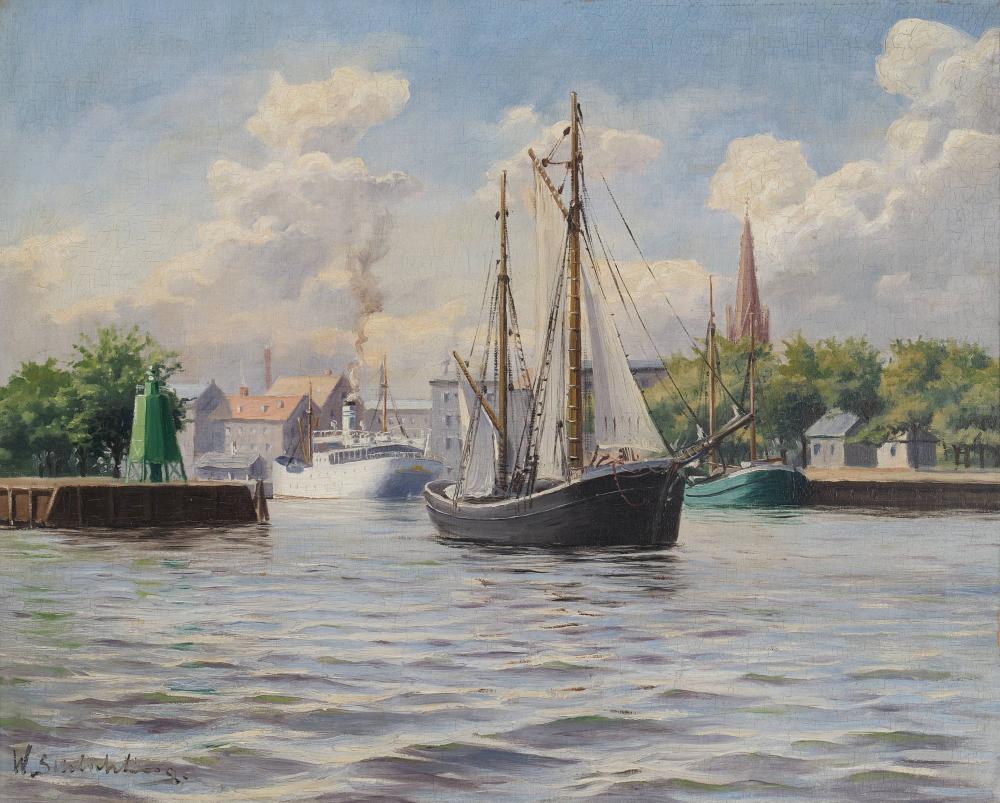
Waldemar Schlichting is a twentieth-century German landscape painter known for his works on the sea.

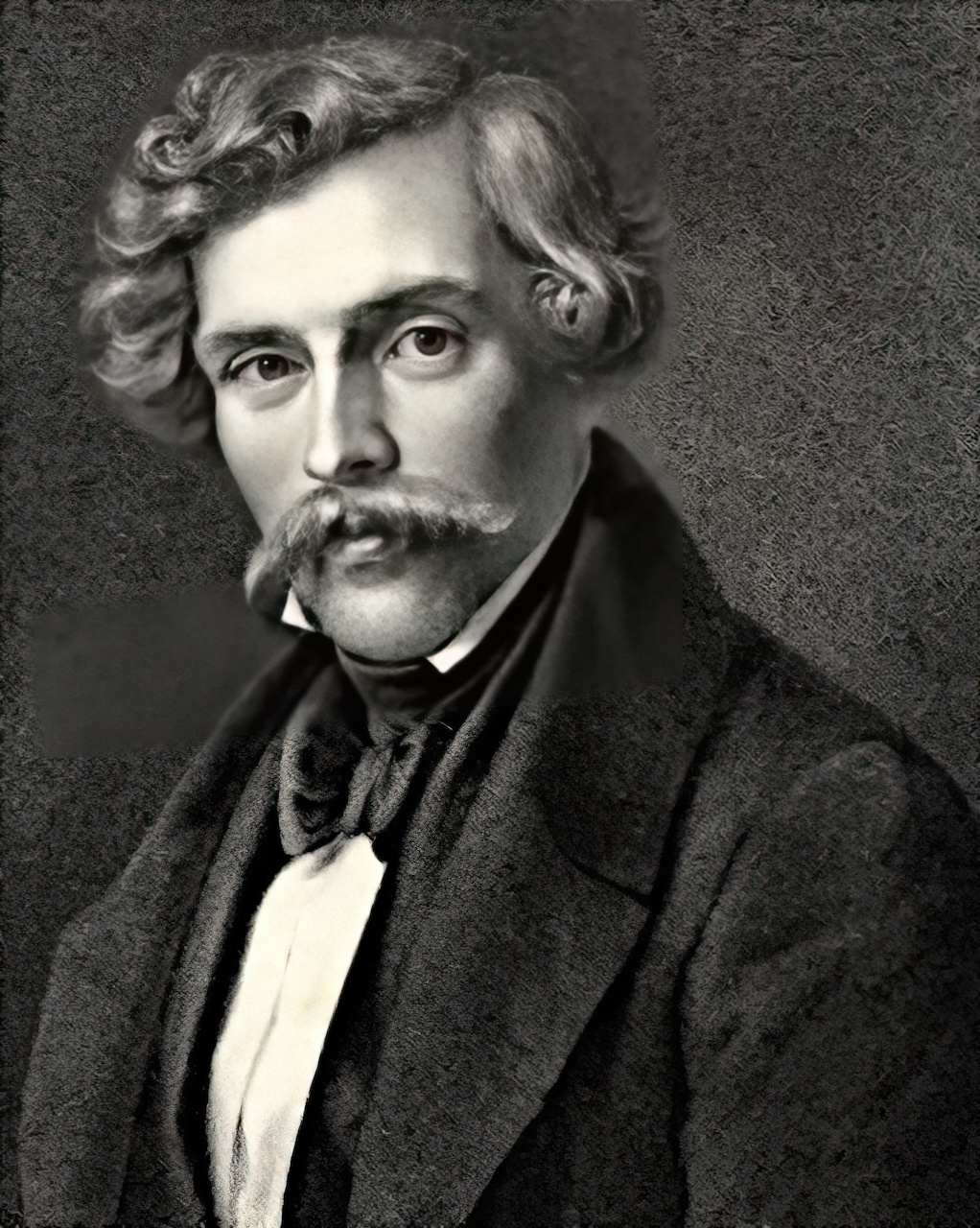
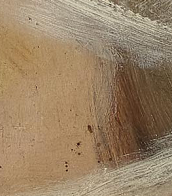
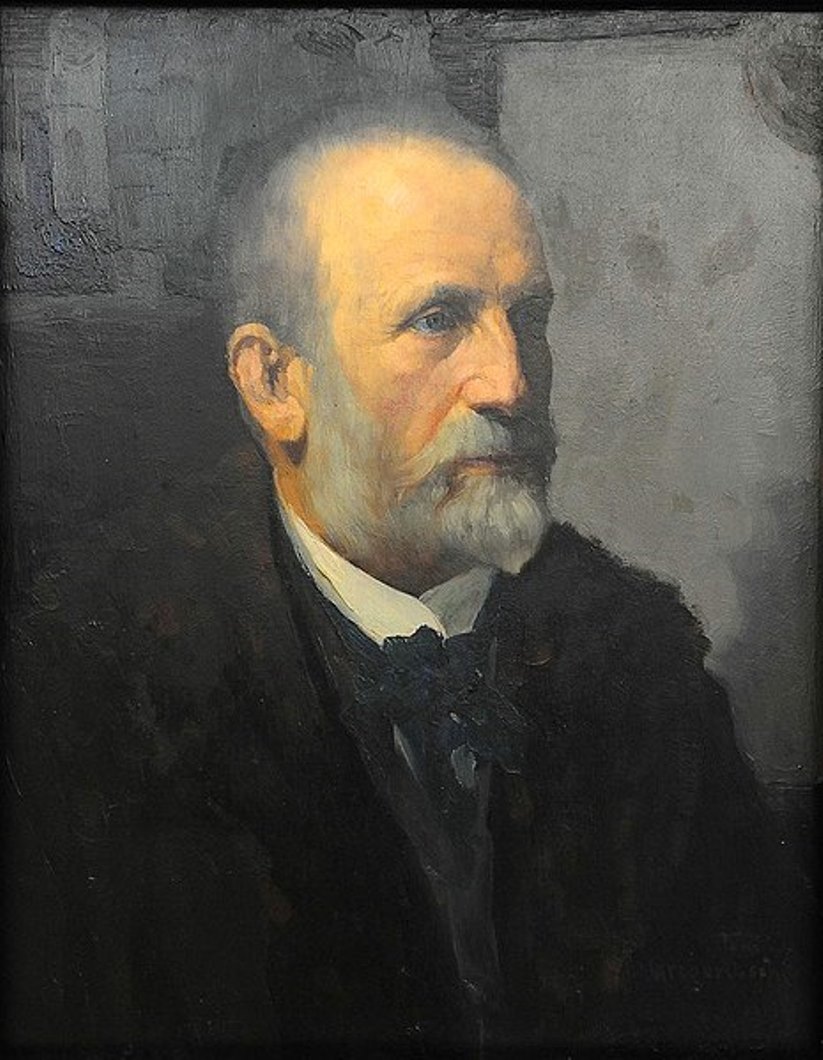
Ludwig Willroider was an Austrian landscape painter, printmaker, and printmaker, the younger brother of the painter Josef Willroider, and an honorary member of the Munich Academy.
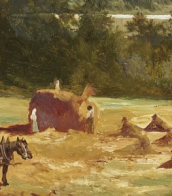
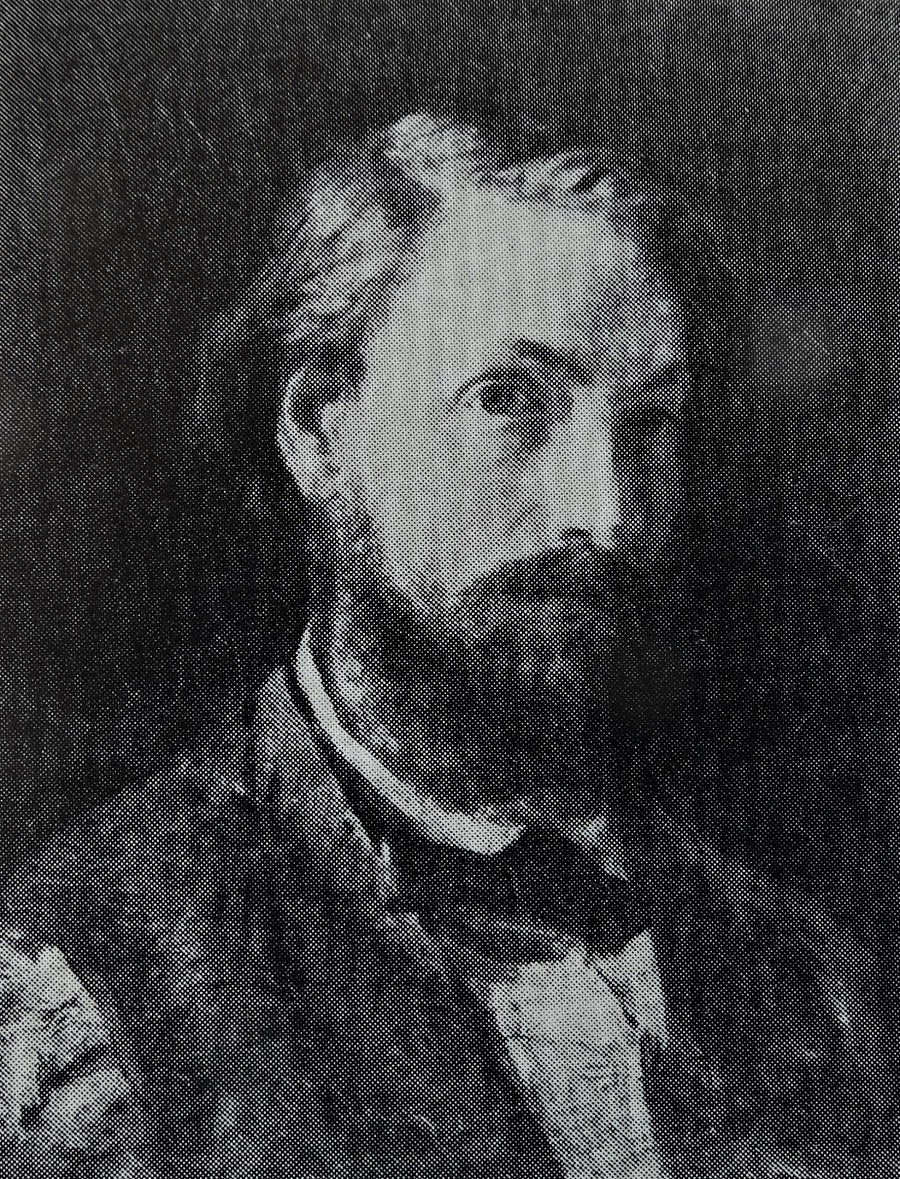
Stanislas Victor Edouard Lépine was a French painter who specialized in landscapes, especially views of the Seine.

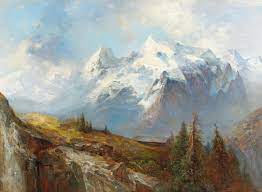
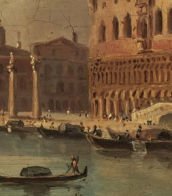

Ludwig Willroider was an Austrian landscape painter, printmaker, and printmaker, the younger brother of the painter Josef Willroider, and an honorary member of the Munich Academy.
